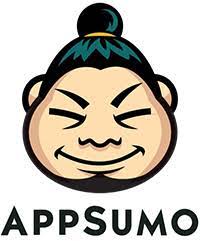CRM software works by providing a centralized platform for businesses to store customer data, track interactions, and share information with colleagues. It helps businesses manage customer relationships and facilitates growth.
CRM systems can be categorized into collaborative, analytical, and operational types. By choosing the right CRM system, businesses can create better customer experiences and improve communication. Implementing a CRM involves mapping the customer journey, defining processes, creating custom fields, migrating customer information, integrating tools, automating manual processes, and adding users with appropriate permissions.
Examples of popular CRM tools include ClickUp, HubSpot, Zendesk, Freshworks, Microsoft Dynamics, BIGContacts, Salesforce, and ActiveCampaign. CRM systems help businesses keep customer contact details up to date, track interactions, and manage customer accounts efficiently.
Understanding CRM and Its Importance
How does the CRM software work? A CRM system essentially provides a central place where businesses can store customer and prospect data, track customer interactions, and share this information with colleagues. It allows businesses to manage relationships with customers, helping the business to grow.
There are three main types of CRM systems: collaborative, analytical, and operational. These systems help businesses create better conversational customer experiences, map customer journeys, define processes, customize fields and pipelines, migrate customer information, integrate tools, and automate manual processes. Users can also be added with specific permissions.
Examples of CRM tools include ClickUp, HubSpot, Zendesk, Freshworks, Microsoft Dynamics, BIGContacts, Salesforce, and ActiveCampaign. These tools enable businesses to manage customer data, tasks, and communication effectively.
The Three Types Of CRM Systems
CRM software, or Customer Relationship Management software, is designed to help businesses manage and nurture their customer relationships. It works by providing a central database where businesses can store customer and prospect information, track customer interactions, and share this information with colleagues.
There are three main types of CRM systems:
| Collaborative CRM | Analytical CRM | Operational CRM |
|---|---|---|
| Focuses on facilitating collaboration between different teams within the organization to improve customer relationships. | Focuses on analyzing customer data to gain insights and improve decision-making. | Focuses on streamlining and automating various operational processes, such as sales, marketing, and customer service. |
With a CRM system, businesses can map their customer journey, define their business and sales processes, create custom fields and pipelines, migrate customer information, integrate with other tools, automate manual processes, and add users with specific permissions.
Some examples of CRM tools include ClickUp, HubSpot, Zendesk, Freshworks, Microsoft Dynamics, BIGContacts, Salesforce, and ActiveCampaign.
The Functionality Of CRM Software
How does the CRM software work? A CRM system essentially provides a central place where businesses can store customer and prospect data, track customer interactions, and share this information with colleagues. It allows businesses to manage relationships with customers, helping the business to grow.
Types of CRM systems: There are three main types of CRM systems: collaborative, analytical, and operational. Each type has its own set of functionalities and benefits. Collaborative CRM focuses on facilitating communication and collaboration among different teams and departments within a company. Analytical CRM utilizes data and analytics to gain insights into customer behaviour and preferences, enabling businesses to make informed marketing and sales decisions. Operational CRM focuses on automating and streamlining various business processes, such as sales, marketing, and customer service, to improve overall efficiency and customer satisfaction.
Steps to use CRM:
- Map your customer journey.
- Define your business and sales processes.
- Create custom fields, stages, and pipelines.
- Migrate your customer information.
- Integrate your tools and automate manual processes.
- Add users and set permissions.
Examples of CRM tools: Some popular CRM tools include ClickUp, HubSpot, Zendesk, Freshworks, Microsoft Dynamics, BIGContacts, Salesforce, and ActiveCampaign. These tools offer features such as customer data management, task management, communication tools, and automation capabilities to streamline business operations and improve customer relationships.

Credit: www.prosalesconnection.com
Choosing The Right CRM System For Your Business
How does the CRM software work? A CRM system essentially provides a central place where businesses can store customer and prospect data, track customer interactions, and share this information with colleagues. It allows businesses to manage relationships with customers, helping the business to grow.
There are three main types of CRM systems: collaborative, analytical, and operational. Collaborative CRM systems focus on improving communication and collaboration among team members. Analytical CRM systems analyze customer data to gain insights and make data-driven decisions. Operational CRM systems streamline and automate business processes to enhance efficiency and productivity.
When choosing a CRM system for your business, consider several factors. First, determine your business needs and goals. Identify the specific features and functionalities that are important to you, such as contact management, lead tracking, or sales forecasting. Second, assess the scalability and flexibility of the CRM system. Ensure that it can grow with your business and adapt to changing requirements. Third, evaluate the integration capabilities of the CRM system. Make sure it can integrate smoothly with your existing tools and systems. Finally, consider the user interface and user experience of the CRM system. It should be intuitive and user-friendly for your employees.
By choosing the right CRM system for your business, you can effectively manage your customer relationships, improve customer experiences, and drive business growth.
| CRM Software Examples |
|---|
| ClickUp |
| HubSpot |
| Zendesk |
| Freshworks |
| Microsoft Dynamics |
| BIGContacts |
| Salesforce |
| ActiveCampaign |
Step-By-Step Guide To Using CRM
| How does the CRM software work? A CRM system essentially provides a central place where businesses can store customer and prospect data, track customer interactions, and share this information with colleagues. It allows businesses to manage relationships with customers, helping the business to grow. |
| Step-by-Step Guide to Using CRM Mapping your customer journey: Understand how your customer interacts with your business at each stage of their journey. Defining business and sales processes: Identify the steps and procedures for your business and sales operations. Creating custom fields, stages, and pipelines: Customize your CRM system to match the unique needs of your business. Migrating customer information: Transfer existing customer data into the CRM system for seamless management. Integrating tools and automating processes: Connect your CRM system with other tools to streamline workflows and automate tasks. Adding users and setting permissions: Grant access to appropriate individuals and define their permissions within the CRM system. |
| Example CRM tools: ClickUp, HubSpot, Zendesk, Freshworks, Microsoft Dynamics, BIGContacts, Salesforce, ActiveCampaign. |
Examples Of CRM Tools
| Examples of CRM Tools |
| ClickUp |
| HubSpot |
| Zendesk |
| Freshworks |
| Microsoft Dynamics |
| BIGContact |
A CRM system is designed to provide a centralized location for businesses to store customer and prospect data, track interactions, and share information with team members. This enables businesses to effectively manage their customer relationships, leading to growth and success. There are three main types of CRM systems – collaborative, analytical, and operational. These systems help create better conversational customer experiences by mapping customer journeys, defining business and sales processes, migrating customer information, integrating tools, and automating manual processes. Some popular examples of CRM tools include ClickUp, HubSpot, Zendesk, Freshworks, Microsoft Dynamics, and BIGContact. These tools allow businesses to manage customer data, tasks, and communication, ultimately improving their relationship with customers.
Read More:
Frequently Asked Questions On How Do Crm Software Work?
How Does The Crm Software Work?
A CRM system works by storing customer and prospect data, tracking interactions, and sharing information with colleagues. It helps businesses manage relationships with customers and grow their business. There are three main types of CRM systems: collaborative, analytical, and operational.
Here’s how to choose the best one for creating better conversational customer experiences. To use CRM, map your customer journey, define your business processes, create custom fields, migrate customer information, integrate tools, automate processes, and add users with permissions. Some examples of CRM tools include ClickUp, HubSpot, Zendesk, Freshworks, Microsoft Dynamics, BIGContacts, Salesforce, and ActiveCampaign.
CRM stands for “Customer Relationship Management” and is a software system that helps businesses track communications and nurture customer relationships. A CRM system helps keep customer contact details up to date, track interactions, and manage customer accounts.
What Are The 3 Types Of CRM?
The three types of CRM are collaborative, analytical, and operational. These systems help businesses store customer data, track interactions, and manage relationships.
How To Use CRM Step-by-Step?
To use CRM step by step: 1. Map your customer journey. 2. Define your business and sales processes. 3. Create custom fields, stages, and pipelines. 4. Migrate your customer information. 5. Integrate your tools and automate manual processes. 6. Add users and set permissions.
What Is An Example Of A CRM Tool?
CRM tools are software systems that businesses use to store and manage customer data, track interactions, and share information with colleagues. Examples include ClickUp, HubSpot, Zendesk, Freshworks, Microsoft Dynamics, BIGContacts, Salesforce, and ActiveCampaign.
Conclusion
CRM software plays a crucial role in managing customer relationships and driving business growth. By providing a central repository for storing customer data, tracking interactions, and sharing information, CRM systems enable businesses to manage relationships with their customers effectively. With different types of CRM systems available, businesses can choose the one that best suits their needs, whether it be collaborative, analytical, or operational.
Implementing CRM software involves mapping the customer journey, defining business processes, migrating customer information, integrating tools, and setting permissions. CRM tools such as ClickUp, HubSpot, Zendesk, and Salesforce offer examples of effective CRM solutions. Ultimately, CRM software empowers businesses to stay organized, improve customer communication, and nurture customer relationships for long-term success.
By leveraging CRM technology, businesses can streamline their operations, enhance customer satisfaction, and drive revenue growth.




